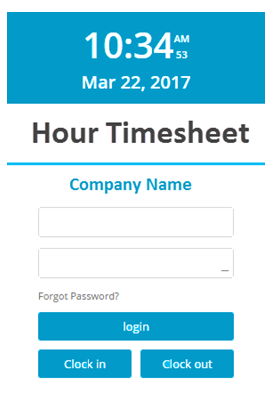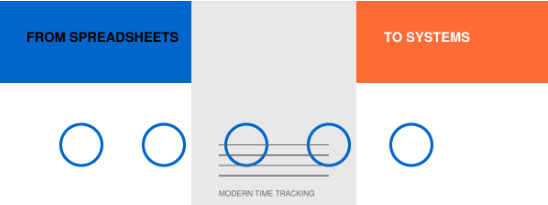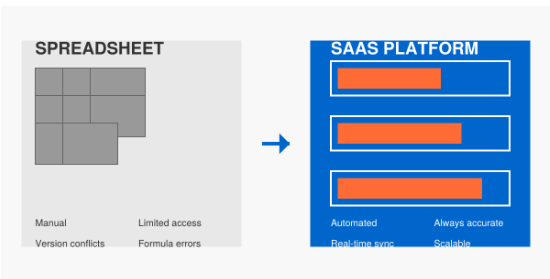Your international expansion strategy looked perfect on paper—establish a lower-cost engineering center in Eastern Europe, leverage manufacturing expertise in Southeast Asia, and tap research talent in your Canadian subsidiary. Then DCAA auditors arrived requesting access to your foreign subsidiary records, demanding timekeeping documentation from your overseas employees, and questioning cost allocations involving international affiliate transactions. Here’s what contractors miss about international operations: DCAA’s audit authority and FAR cost principles don’t stop at U.S. borders. When you charge costs from international operations to U.S. government contracts, those costs must satisfy identical compliance requirements as domestic operations—regardless of foreign subsidiary locations, local business practices, or international accounting standards. Understanding how to maintain DCAA compliance across international operations isn’t optional for global contractors—it’s essential for protecting your entire federal contract portfolio.
The Legal Framework Extending Compliance Internationally
Federal cost accounting requirements apply to all costs charged to U.S. government contracts regardless of where those costs originate geographically. FAR 31.201-2 establishes that allowable costs must be reasonable, meaning they reflect what a prudent businessperson would incur under comparable circumstances. This reasonableness standard applies equally to costs incurred in California and costs incurred in Bangalore—your business justification for international cost structures must satisfy identical scrutiny DCAA applies to domestic operations.
FAR 52.215-2, the Audit and Records clause included in solicitations and contracts, grants DCAA access to “books, documents, papers, and records” supporting costs charged to government contracts. This access right extends to records maintained by subcontractors, affiliates, and subsidiaries when those entities generate costs flowing to government contracts. Your foreign subsidiary’s timekeeping records, payroll documentation, and cost allocation methodologies fall within DCAA’s audit scope when your prime contract includes costs from international operations.
The critical regulation international contractors must understand is FAR 31.205-26, governing material and services costs including requirements for intercompany transactions. When you purchase services from your foreign subsidiary or acquire materials through international affiliates, these related party transactions must demonstrate arm’s-length pricing equivalent to what you’d pay unrelated vendors for comparable items or services. The regulation creates specific documentation requirements proving international affiliate costs charged to government contracts reflect market-based pricing rather than convenient cost allocation schemes.
What International Contractors Must Navigate
Here’s what contractors miss about international compliance: foreign subsidiaries operating under local accounting standards, labor laws, and business practices still must generate records satisfying U.S. government cost accounting requirements when their costs support federal contracts. Your Polish engineering center might follow Polish labor regulations and EU accounting directives, but when Polish engineers charge time to U.S. Defense contracts, their timekeeping must satisfy DCAA standards including daily entry, employee signature, supervisory approval, and prohibition of after-the-fact reconstruction.
The timekeeping challenge gets complicated by time zones, language barriers, and cultural differences in work hour documentation. Many countries use monthly timesheets, flexible work hour systems, or trust-based time reporting completely incompatible with DCAA requirements for contemporaneous daily time entry. Understanding DCAA timekeeping requirements means implementing systems ensuring international employees follow identical timekeeping standards as domestic employees—regardless of local business norms or foreign labor regulations.
Transfer pricing creates the most complex compliance challenge for international operations. When you charge U.S. government contracts for services performed by foreign subsidiaries, DCAA examines whether your intercompany billing rates reflect arm’s-length pricing. If your German subsidiary charges $150 per hour for engineering services your U.S. operation performs at $120 per hour, you need detailed justification explaining the pricing differential through skill level differences, specialized expertise, or market rate variations. Without proper documentation, DCAA presumes the lower domestic rate represents reasonable pricing, disallowing the $30 per hour premium on foreign subsidiary labor.
Material costs sourced internationally face particular scrutiny regarding price reasonableness and proper customs valuation. When you import components from overseas suppliers—especially when those suppliers are affiliated entities—your cost accounting must demonstrate competitive pricing through market research, alternative supplier quotations, or independent cost analysis. The fact that your Chinese manufacturing affiliate is the only source for certain components doesn’t eliminate your obligation to prove pricing reasonableness through benchmarking against comparable items or detailed cost buildup analysis.
DCAA compliance explained for international operations means building documentation systems that bridge U.S. regulatory requirements and foreign operational realities, creating compliant cost accounting while respecting local legal constraints and business practices.
Five Essential Steps for International Contract Compliance
Step 1: Implement Global Timekeeping Standard Operating Procedures
Deploy uniform timekeeping systems and procedures across all locations performing work on U.S. government contracts—domestic and international. Your timekeeping policies must establish identical requirements for time entry frequency, approval workflows, and record retention regardless of employee location. Create detailed guidance translated into local languages explaining DCAA timekeeping requirements and why these standards supersede local business practices when employees work on federal contracts.
Implement DCAA-compliant timekeeping systems with cloud-based access enabling international employees to submit daily time entries with real-time synchronization to your central cost accounting systems. Technology eliminates geography as an excuse for compliance failures—your Polish engineers can submit daily timesheets as easily as your Virginia engineers when you provide proper systems and training.
Establish monthly compliance audits reviewing international employee timekeeping for DCAA requirement adherence including daily entry verification, signature completeness, and supervisory approval documentation. Early identification of compliance gaps enables corrective training before DCAA auditors discover systematic violations affecting multiple accounting periods.
Step 2: Create Comprehensive Transfer Pricing Documentation Systems
Develop detailed transfer pricing policies establishing methodologies for all intercompany transactions between U.S. prime contractors and international subsidiaries or affiliates. Your policies must define pricing bases (cost-plus, market-based, comparable uncontrolled price), document markup percentages with supporting market analysis, and establish approval procedures for intercompany billing rate changes.
Maintain comprehensive comparability studies demonstrating your intercompany pricing reflects arm’s-length transactions through analysis of independent vendor prices, published labor rate surveys, or detailed cost buildup justifications. When your Singapore subsidiary charges engineering services to U.S. contracts, you need documentation proving those rates approximate what you’d pay unaffiliated Singapore engineering firms for comparable services.
Build automated systems flagging intercompany transactions for management review before costs flow to government contracts, ensuring transfer pricing complies with documented methodologies and current market benchmarks. Prevention through systematic controls beats retrospective justification when DCAA challenges international affiliate charges.
Step 3: Establish International Records Access Protocols
Create formal agreements with foreign subsidiaries and affiliates granting DCAA audit access to records supporting costs charged to U.S. government contracts. These access agreements must address potential conflicts with foreign privacy laws, data protection regulations, and local legal restrictions on information disclosure while ensuring DCAA receives documentation necessary for cost verification.
Develop procedures for providing DCAA auditors with international records including translation services for non-English documentation, currency conversion methodologies for financial records, and explanatory context for foreign business practices affecting cost accounting. Proactive transparency builds auditor confidence in your international cost controls while satisfying regulatory access requirements.
Implement secure data sharing systems enabling DCAA auditors to review international subsidiary records without requiring physical travel to foreign locations. Cloud-based document repositories with controlled access streamline audit processes while maintaining appropriate confidentiality and security controls over sensitive business information.
Step 4: Deploy Foreign Exchange and Currency Conversion Controls
Establish systematic procedures for converting foreign currency costs to U.S. dollars using consistent methodologies compliant with GAAP and DCAA requirements. Your currency conversion policies must define exchange rate sources (Federal Reserve, OANDA, specific bank rates), timing of conversion (transaction date, month-end, contract-specific rates), and documentation supporting rate application.
Build accounting system controls automatically applying approved exchange rates to international subsidiary costs as transactions flow to U.S. prime contract cost pools, eliminating manual conversion errors and ensuring consistent methodology application. Create comprehensive audit trails documenting exchange rates used, conversion dates, and resulting U.S. dollar amounts supporting DCAA verification procedures.
Implement hedge accounting procedures when you use forward contracts or other instruments managing foreign exchange risk on international contracts. Hedge costs must be properly allocated to benefiting contracts through systematic methodologies demonstrating reasonable business practices and appropriate cost allocation principles.
Step 5: Create International Compliance Training and Certification Programs
Develop comprehensive training programs educating international employees about U.S. government contract requirements including timekeeping standards, cost allowability principles, and documentation obligations. Training must address cultural and business practice differences explaining why DCAA requirements supersede local norms when work supports federal contracts.
Establish annual certification requirements for international managers overseeing government contract work, confirming understanding of compliance obligations and commitment to maintaining required standards. Management certifications create accountability while demonstrating organizational commitment to international compliance.
Deploy ongoing compliance monitoring through quarterly reviews of international operations including timekeeping audits, transfer pricing verification, and documentation adequacy assessments. Systematic monitoring identifies compliance drift before violations accumulate into major audit findings requiring extensive corrective action.
The Investment in International Compliance Systems
Building robust international contract compliance systems costs between $125,000 and $275,000 for contractors with significant international operations depending on number of foreign locations, complexity of intercompany transactions, and existing system capabilities. This includes implementing global timekeeping systems, developing transfer pricing documentation, creating audit access protocols, and establishing compliance training programs. Annual maintenance typically runs $45,000 to $85,000 for ongoing monitoring and system updates.
Let me show you the value: contractors with excellent international compliance systems compete successfully for global programs requiring multinational performance, leverage international talent and cost advantages while maintaining government contract eligibility, and expand into commercial international markets using infrastructure built for government compliance. Your investment in international compliance systems creates competitive capabilities beyond regulatory requirement satisfaction.
Contractors without adequate systems face questioned costs on international subsidiary charges requiring contract price reductions, billing holds while you reconstruct transfer pricing justifications delaying cash flow for months, and competitive disadvantages in source selection when past performance evaluations note international compliance weaknesses. These consequences affect your entire contract portfolio—not just specific international programs.
Understanding DCAA’s Global Audit Jurisdiction
DCAA audit authority extends to all costs charged to U.S. government contracts regardless of where those costs originate globally. The agency maintains regional offices worldwide and coordinates with Defense Contract Management Agency International for audit support in countries with significant U.S. contractor presence. Your Munich subsidiary and your Manila operations face identical DCAA scrutiny as your Memphis headquarters when their costs support federal contracts.
Multi-national contractors must recognize that compliance requirements don’t vary by location—FAR cost principles, CAS requirements, and DCAA audit standards apply uniformly worldwide. You cannot claim local business practices justify non-compliance with U.S. government cost accounting requirements. The burden falls on contractors to implement systems ensuring international operations satisfy U.S. regulatory requirements regardless of conflicts with local norms.
Your Path to Global Contract Success
The international contract compliance landscape rewards contractors who build robust systems enabling global operations while maintaining regulatory compliance. DCAA respects contractors demonstrating systematic international compliance management through uniform policies, comprehensive documentation, and proactive audit cooperation across all geographic locations.
For contractors managing international operations supporting U.S. government contracts, Hour Timesheet provides cloud-based solutions enabling consistent DCAA-compliant timekeeping across global workforces. Our platform delivers the daily time entry, approval workflows, and audit trail capabilities international employees need while maintaining centralized compliance monitoring for management oversight.
Your international operations represent competitive advantages in technical capability and cost efficiency. Protect those advantages through compliance systems ensuring your global workforce supports rather than threatens your federal contract portfolio.
Additional Resources
Related Hour Timesheet Articles:
- DCAA Compliance Requirements for Contractors
- DCAA Compliance Explained
- DCAA Timekeeping Requirements
Official Regulatory References:
- FAR 31.201-2 – Determining reasonableness
- FAR 52.215-2 – Audit and records clause
- FAR 31.205-26 – Material costs
- DCAA Contract Audit Manual
- Defense Contract Management Agency International


